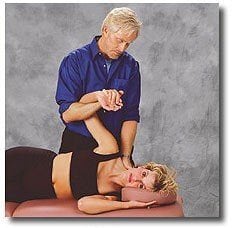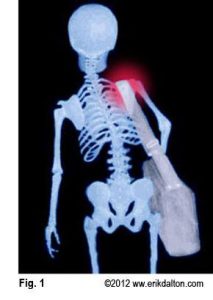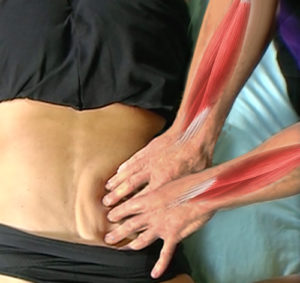 If a patient has carpal tunnel syndrome, the manual therapist who has studied the protocols on Dalton’s “Advanced Myoskeletal Techniques for Shoulder, Arm and Hand Pain” should then be able to proceed with the appropriate medical massage techniques to address this specific condition.
If a patient has carpal tunnel syndrome, the manual therapist who has studied the protocols on Dalton’s “Advanced Myoskeletal Techniques for Shoulder, Arm and Hand Pain” should then be able to proceed with the appropriate medical massage techniques to address this specific condition.
For those who suffer from carpal tunnel syndrome, the discomfort and frustration associated with this condition can affect daily function and quality of life. It’s no surprise, then, that these folks are usually highly motivated to seek help and find a way to ease the uncomfortable symptoms of carpal tunnel syndrome. For the manual therapist who is trained in medical massage, the ability to offer relief to clients with this condition can be a huge boon to your business — not to mention your clients’ quality of life. Erik Dalton, the developer of “Advanced Myoskeletal Techniques for Shoulder, Arm and Hand Pain,” has created a system that allows practitioners to effectively assesses and address a wide variety of clinical client problems, including carpal tunnel syndrome. For those massage therapists, bodyworkers, athletic trainers and other manual therapists who wish to advance their skills in the realm of pain management, training in MAT is savvy step toward success.
With a well-rounded catalog of continuing education programs, as well as several live workshops each year, Dalton and his team at the Freedom From Pain Institute, offer prospective students a number of methods for attaining MAT skills, as well as an array of focal points for their training. For example, some practitioners may choose to begin or further their education in myoskeletal alignment with Dalton’s home-study program that focuses on the relationship between posture and pain. Others may be more interested in gaining MAT training for issues that affect the lower body or the upper body specifically. For those who are interested in learning the step-by-step MAT protocol for addressing carpal tunnel syndrome, Dalton’s top-notch lesson can be found on the two-DVD set called “Advanced Myoskeletal Techniques for Shoulder, Arm and Hand Pain.” These DVDs contain three hours of clinical training on soft-tissue techniques for clients who suffer from conditions that range from carpal tunnel syndrome and golfers elbow to rotator cuff injuries and nerve pinches.
Addressing Carpal Tunnel with Medical Massage
For manual therapists who are currently considering training in MAT, it can help to take a look at a few of the short YouTube clips that have been pulled from various MAT continuing education programs, including the video called “Dalton Carpal Tunnel Syndrome,” which comes directly from the DVD set mentioned above, “Advanced Myoskeletal Techniques for Shoulder, Arm and Hand Pain.” It’s important to keep in mind that no brief video clip can ever stand in for proper training, and it would be unsafe to attempt MAT on clients without first completing one of Dalton’s full training programs and receiving your credential as a Certified Myoskeletal Therapist. However, while these snippets of footage from the MAT CE library are not meant to provide actual training, they do offer a fantastic preview of the skills and education you can expect to receive with any one of Dalton’s CE programs.
In the clip on carpal tunnel syndrome, Dalton begins with a short description of how to perform a carpal tunnel assessment for tingling and numbness, instructing practitioners to hold the client’s extended wrist and push or tap on the carpal tunnel ligament while the client flexes and extends his or her fingers. If carpal tunnel syndrome appears to be present, the manual therapist who has studied the protocols on Dalton’s “Advanced Myoskeletal Techniques for Shoulder, Arm and Hand Pain” should then be able to proceed with the appropriate medical massage techniques to address this specific condition. In the video clip, Dalton demonstrates this technique on a client and enhances the educational value of the lesson with camera close-ups and anatomical models. Besides showing students exactly how to perform MAT for carpal tunnel syndrome, Dalton also weaves in a lesson the mechanism behind this condition, which often involves swollen flexor tendons that can begin to crowd out the median nerve.
On sale this week only!
Save 25% off the "Dalton Technique Treasures" eCourse
The “Dalton Technique Treasures” eLearning course is a compilation of some of Erik’s favorite Myoskeletal Alignment Techniques (MAT). Learn MAT techniques to assess and address specific sports injuries, structural misalignment, nervous system overload, and overuse conditions. ON SALE UNTIL July 29th! Get Lifetime Access: As in all our eLearning courses, you get easy access to the course online and there is no expiry date.








